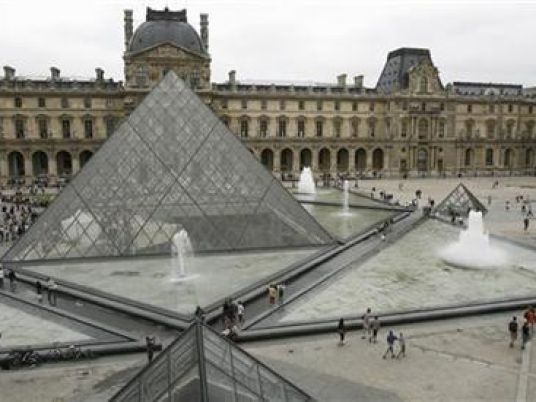(CNN)Blistering heat has returned to western Europe, as some countries like France enter into their third wave of the summer with temperatures expected to reach over 100 degrees Fahrenheit (37 degrees Celsius), while more than 80% of the US population will experience temperatures over 90 degrees (32C) within the next week, including in the Mid-Atlantic and Northeast. Around 100 million Americans have been under heat alerts for eight of the past 16 days.
This means hundreds of millions of people living in urban areas are again
desperately trying to stay cool. The climate crisis is making extreme heat more frequent and last longer — but cities, without thoughtful design, can make life even hotter.
Air conditioners might keep the indoors cool, but they only add to heat outdoors. And in most cases, they are adding to the climate crisis by increasing planet-warming emissions. Public transportation may be unbearable on a hot day, but driving a car that runs on gas instead just worsens traffic, also adding to heat and emissions. A lack of trees means a lack of shade, and buildings made of dark materials bring hotter interiors, which means more air conditioning.
It’s a vicious cycle, but there are other solutions.
Here’s how eight cities are taking some of the heat out of their summers.
Medellín, Colombia: Grow trees on the streets, not just in parks
When it gets really hot, people with air conditioning might stay indoors, but not everyone has that luxury and — well, who wants to say in all the time?
For cities that aren’t on the coast, parks that offer shade are a good option. Colombia’s second-largest city, Medellín, however, has created an entire metropolis of shade with its
award-winning Green Corridors project.The web-like network has transformed
18 roads and 12 waterways into lush green cycling lanes and walkways that connect the city’s parks and other frequently visited sites.
Temperatures have come down in these areas and their surrounds by as much as 5.5 degrees Fahrenheit (around 3 degrees Celsius), and officials hope that before 2030, it could shave off up to 9 degrees Fahrenheit (5 Celsius).
“Urban forests are the very best thing for city heat,” Kathy Baughman McLeod, director of the Adrienne Arsht-Rockefeller Foundation Resilience Center (Arsht-Rock) at the Atlantic Council, told CNN. “Medellín has dropped the city’s average summer temperature, which is remarkable.”
By 2019, the city had planted more than 8,000 trees and over 350,000 shrubs. It also uses an area beneath a raised Metro line to collect rainwater that flows down from the bridge, capturing it in a system of pipes to help water the green belts.
Vienna: Splish, splash, splosh
Like in much of Europe, many in Vienna don’t have air conditioning, so water is a big part of how the Austrian capital keeps cool.
For those who don’t have time for a dip in the Danube, the city offers cooling parks with mist-spraying “trees” that people can either “shower” in, or just sit near to enjoy the cooler temperatures they bring their surrounds.
Children, who are generally more vulnerable to extreme heat than adults, are often seen playing in the city’s splash pools or running around in pop-up water features — typically hosepipes with holes punched in them — that the
city government brings out on the hottest of days, including in areas like Karlsplatz, a popular city square.
Vienna also has a huge number of water fountains for drinking to keep people hydrated — more than 1,100 for its population of 1.9 million — which is important in preventing heat-related illness.
“Air conditioning in homes may sound like a quick and easy solution. But it’s not a long-term sustainable solution because of the source of the power and the waste heat that comes off the unit,” McLeod said. “So thinking about how to get more airflow, use water features and get windows to open in some of the oldest buildings is key. The nature-based solutions are the best for extreme heat.”
Abu Dhabi, United Arab Emirates: Use old cooling techniques and modernize them
Parts of the Middle East are some of the hottest inhabited places on Earth. Temperatures in Abu Dhabi can climb to more than 120 degrees Fahrenheit (over 50 Celsius). Air conditioning is seen as a necessity, and people tend to spend a lot of time indoors.
But people here haven’t always had air conditioning, and an ancient Arabic architectural cooling technique has made a comeback — with a modern twist.
Mashrabiya refers to the latticed screens often seen in Islamic architecture, sometimes surrounding a small balcony, that diffuse sunlight and keep buildings cool without completely blocking light. They are designed to encourage a breeze and offer a spot of respite from the heat within a building. The idea is essentially to stop direct sunlight landing on a building’s exterior.
That’s what inspired the
design of Al Bahar Towers, a 25-story building wrapped in more than 1,000 hexagonal shades with built-in sensors that allow them to respond to the sun’s movements. When the sun hits the shades, they unfold like an umbrella to ward off the heat. Without these measures, the outside of such a building in Abu Dhabi could reach as high as 200 degrees (around 90 Celsius).
The technique has helped reduce the building’s need for air conditioning by 50%. Cool, huh?
Miami: Target heat traps
In a lot of cities, catching the bus can mean a long wait. If it’s really hot, the wait can be all the more punishing — unless, of course, that bus stop has been thoughtfully engineered to include natural shade.



